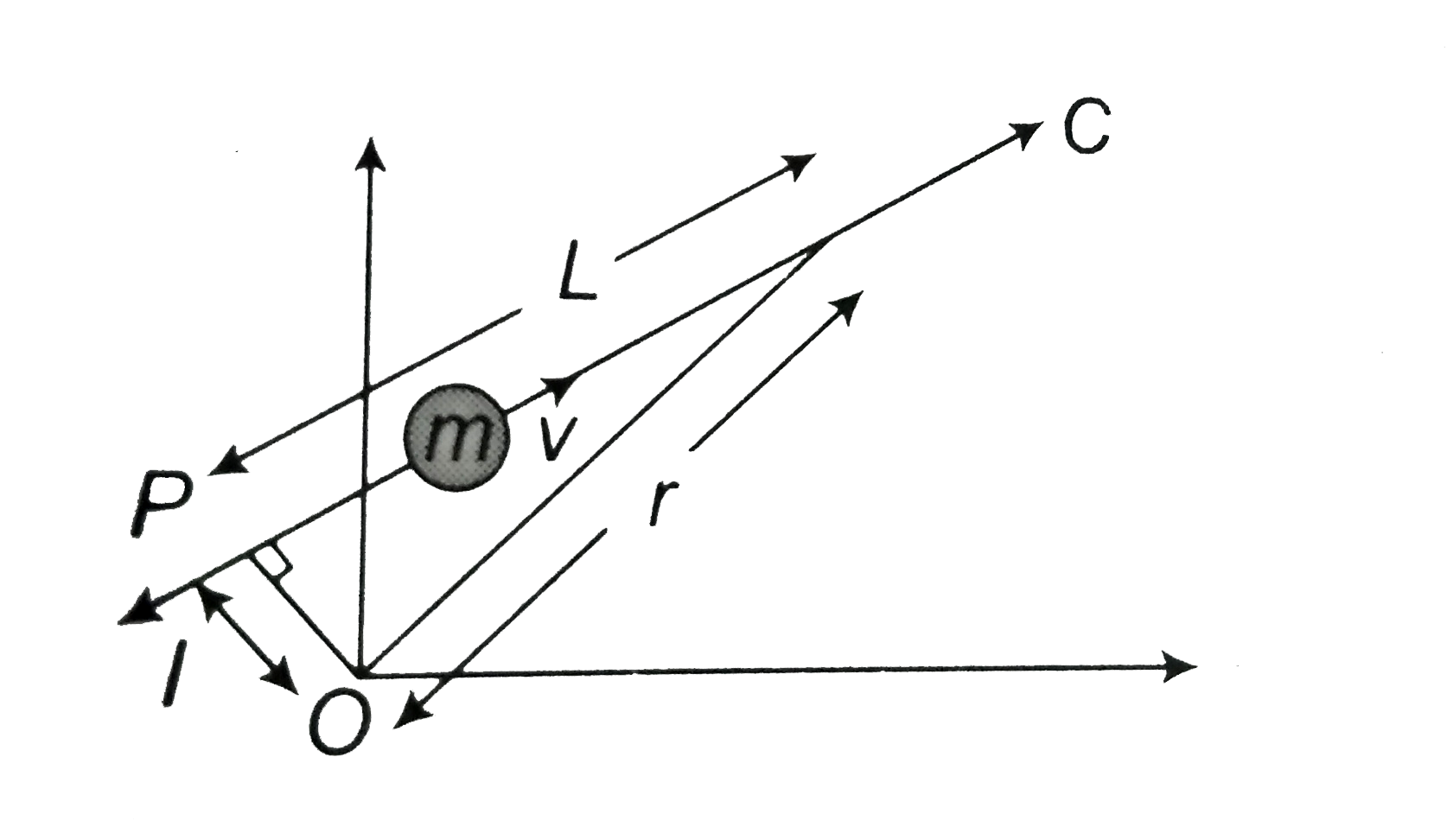Assertion : If a particle moves with a constant velocity, then angular momentum of this particle about any point remains constant.
Reason : Angular momentum has the units of Plank's constant.
If both Assertion and Reason are correct and Reason is the correct explanation of Assertion
If both Assertion and Reason are true but Reason is not the correct explanation of Assertion
If Assertion is true but Reason is fasle
If Assertion is false but Reason is true
The correct Answer is:B
To solve the given assertion-reason question, we will analyze both the assertion and the reason step by step.
Step 1: Analyze the Assertion
The assertion states: "If a particle moves with a constant velocity, then angular momentum of this particle about any point remains constant."
1. Understanding Angular Momentum: Angular momentum (L) of a particle about a point is given by the formula:
L=m⋅v⋅r⋅sin(θ)
where:
- m = mass of the particle,
- v = velocity of the particle,
- r = distance from the point to the line of action of the velocity,
- θ = angle between the position vector and the velocity vector.
2. Constant Velocity: If the particle is moving with a constant velocity, then both the speed (magnitude of velocity) and direction of the velocity remain unchanged.
3. Differentiation: Taking the time derivative of angular momentum:
dLdt=m(dvdt⋅r⋅sin(θ)+v⋅drdt⋅sin(θ)+v⋅r⋅d(sin(θ))dt)
Since v is constant, dvdt=0. If the distance r and angle θ remain constant, then drdt=0 and d(sin(θ))dt=0.
4. Conclusion for Assertion: Therefore, dLdt=0, which implies that the angular momentum L remains constant. Thus, the assertion is true.
Step 2: Analyze the Reason
The reason states: "Angular momentum has the units of Planck's constant."
1. Understanding Units: Angular momentum has units of:
Angular Momentum (L)=mass×velocity×distance=kg⋅m/s⋅m=kg⋅m2/s
2. Planck's Constant: Planck's constant (h) has the units of:
h=kg⋅m2/s
3. Conclusion for Reason: Since the units of angular momentum (kg·m²/s) are indeed the same as the units of Planck's constant, the reason is also true.
Step 3: Relationship Between Assertion and Reason
While both the assertion and reason are true, the reason does not explain the assertion. The assertion is based on the principles of constant velocity and angular momentum, while the reason discusses the units of angular momentum.
Final Conclusion
- Assertion: True
- Reason: True
- Relationship: The reason is not the correct explanation of the assertion.
Thus, the correct answer is that both the assertion and reason are true, but the reason is not the correct explanation for the assertion.
---
The assertion states: "If a particle moves with a constant velocity, then angular momentum of this particle about any point remains constant."
L=m⋅v⋅r⋅sin(θ)
where:
- m = mass of the particle,
- v = velocity of the particle,
- r = distance from the point to the line of action of the velocity,
- θ = angle between the position vector and the velocity vector.
dLdt=m(dvdt⋅r⋅sin(θ)+v⋅drdt⋅sin(θ)+v⋅r⋅d(sin(θ))dt)
Since v is constant, dvdt=0. If the distance r and angle θ remain constant, then drdt=0 and d(sin(θ))dt=0.
The reason states: "Angular momentum has the units of Planck's constant."
Angular Momentum (L)=mass×velocity×distance=kg⋅m/s⋅m=kg⋅m2/s
h=kg⋅m2/s
While both the assertion and reason are true, the reason does not explain the assertion. The assertion is based on the principles of constant velocity and angular momentum, while the reason discusses the units of angular momentum.
- Assertion: True
- Reason: True
- Relationship: The reason is not the correct explanation of the assertion.
Topper's Solved these Questions
- ROTATIONBOOK - DC PANDEY ENGLISHCHAPTER - ROTATIONEXERCISE - (C) Chapter Exercises
39 Videos
- ROTATIONBOOK - DC PANDEY ENGLISHCHAPTER - ROTATIONEXERCISE - (A) Chapter Exercises
83 Videos
- RAY OPTICSBOOK - DC PANDEY ENGLISHCHAPTER - RAY OPTICSEXERCISE - Integer type q.
14 Videos
- ROTATIONAL MECHANICSBOOK - DC PANDEY ENGLISHCHAPTER - ROTATIONAL MECHANICSEXERCISE - Subjective Questions
2 Videos
Similar Questions
Knowledge Check
Angular momentum of the particle rotating with a central force is constant due to
Aconstant torqueBconstant forceCconstant linear momentumDzero torque
Assertion: If linear momentum of a particle is constant, then its angular momentum about any point will also remain constant.
Reason: Linear momentum remains constant if Fnet=0 and angular momentum remains constant if τnet=0
View SolutionA particle moves with a constant velocity parallel to the X-axis. Its angular momentum with respect to the origin
View SolutionStatement - 1 : A particle moves with a constant velocity parallel to the x-axis. Its angular momentum w.r.t. the origin will remains constant.
Because
Statement - 2 : Angular momentum is defined as →L=→r×→P
View SolutionA particle moves on a straight line with a uniform velocity. It's angular momentum
View SolutionA particle moves with constant angular velocity in a circle. During the motion its
View SolutionAssertion : If a particle is rotating in a circle, then angular momentum about centre is mvR
Reason : In circular motion, angular momentum about centre is always constant.
View SolutionA particle of mass m moves along line PC with velocity v as shown. What is the angular momentum of the particle about O?

View Solution
